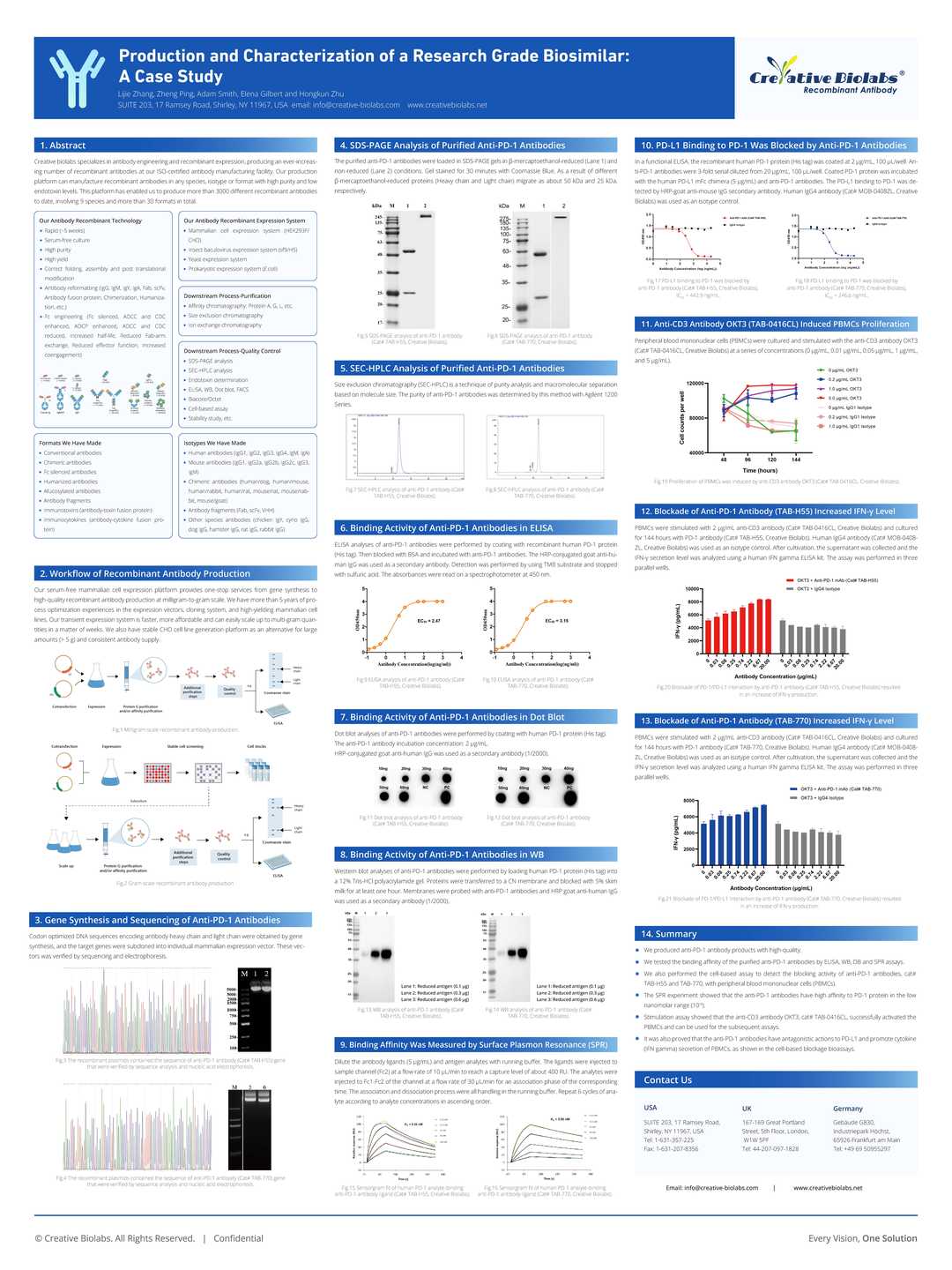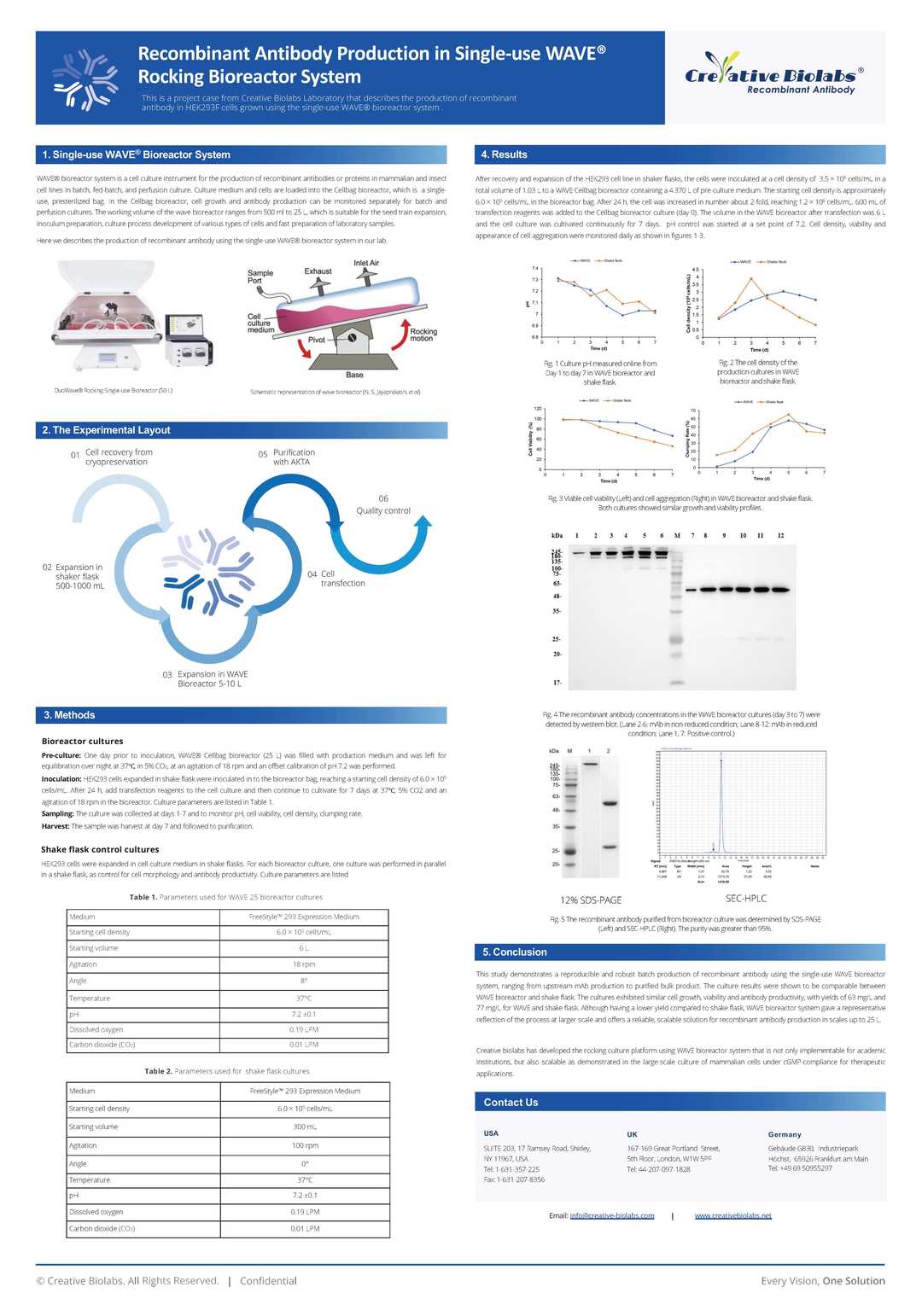Anti-CD248 Recombinant Antibody (Ontuxizumab)
CAT#: TAB-773
Recombinant chimeric/humanized hybrid (mouse/human) antibody expressed in CHO binding to human CD248. Ontuxizumab is a monoclonal antibody designed for the treatment of cancer.


















Specifications
- Immunogen
- The details of the immunogen for this antibody are not available.
- Host Species
- Mouse
- Derivation
- Chimeric/humanized hybrid (mouse/human)
- Type
- IgG1 - kappa
- Species Reactivity
- Human
- Applications
- Neut, ELISA, IF, IP, FuncS, FC, ICC
- CAS
- 946415-62-9
- Generic Name
- ontuxizumab
- MW
- 147.0 kDa
- Related Disease
- Solid tumors
Product Property
- Purity
- >95.0% as determined by analysis by SDS-PAGE.
- Storage
- Store at 4°C for up to 3 months. For longer term storage aliquot into small volumes and store at -20°C.
Applications
- Application Notes
- The CD248 antibody has been reported in applications of FC, IF, Internalization, WB, ELISA, Inhib, IP, EM, Cell Viability Assay, Activ.
IP: We lysed 107 cells in radioimmunoprecipitation (RIPA) buffer [50 mM Tris·HCl (pH 7.4)/1% Nonidet P-40/0.5% sodium deoxycholate/150 mM NaCl/0.1% SDS] supplemented with Complete Mini protease inhibitor mixture and centrifuged them at 13,000 × g for 15 min to remove debris. Protein G Sepharose 6 Fast Flow Beads were washed three times with PBS, and 1 μg of anti-FN antibody was captured by gentle rocking at 4°C. Equal amounts of protein per sample were precleared by the addition of unbound protein G. After 2 h of incubation, the protein G was removed, and the supernatant was added to the antibody–Sepharose complex and incubated overnight at 4°C. After extensive washing with RIPA buffer, the bound protein was removed by boiling for 10 min in NuPAGE LDS sample buffer containing 5% 2-mercaptoethanol. Proteins were separated by using SDS/PAGE on a 4–12% Bis-Tris gel and transferred to PVDF membrane.
Target
Customer Review
There are currently no Customer reviews or questions for TAB-773. Click the button above to contact us or submit your feedback about this product.
Cite This Product
To accurately reference this product in your publication, please use the following citation information:
(Creative Biolabs Cat# TAB-773, RRID: AB_3112010)
Submit Your Publication
Published with our product? Submit your paper and receive a 10% discount on your next order! Share your research to earn exclusive rewards.
Biosimilar Overview
Please refer to Ontuxizumab Overview to learn more about the mechanism of action, clinical projects, and approved drugs of Ontuxizumab.
Downloadable Resources
Download resources about recombinant antibody development and antibody engineering to boost your research.
Product Notes
This is a product of Creative Biolabs' Hi-Affi™ recombinant antibody portfolio, which has several benefits including:
• Increased sensitivity
• Confirmed specificity
• High repeatability
• Excellent batch-to-batch consistency
• Sustainable supply
• Animal-free production
See more details about Hi-Affi™ recombinant antibody benefits.
Datasheet
MSDS
COA
Certificate of Analysis LookupTo download a Certificate of Analysis, please enter a lot number in the search box below. Note: Certificate of Analysis not available for kit components.
Protocol & Troubleshooting
We have outlined the assay protocols, covering reagents, solutions, procedures, and troubleshooting tips for common issues in order to better assist clients in conducting experiments with our products. View the full list of Protocol & Troubleshooting.
See other products for "Ontuxizumab"
Afuco™ Anti-CD248 ADCC Recombinant Antibody, ADCC Enhanced (AFC-TAB-773)This product is an ADCC enhanced antibody produced by our Afuco™ platform. Recombinant chimeric/humanized hybrid (mouse/human) antibody expressed in CHO binding to human CD248. It is a monoclonal antibody designed for the treatment of cancer.
See other products for "Cd248"
Select a product category from the dropdown menu below to view related products.
| CAT | Product Name | Application | Type |
|---|---|---|---|
| NAB-289-sdAb | Recombinant Anti-Mouse Cd248 VHH Single Domain Antibody | WB, ICC, ChiP, FA, ELISA | Llama VHH |
| CAT | Product Name | Application | Type |
|---|---|---|---|
| MOB-2375z | Mouse Anti-CD248 Recombinant Antibody (clone 5B2) | WB, ELISA, IHC | Mouse IgG1 |
| HPAB-AP032-YC | Human Anti-CD248 Recombinant Antibody (HPAB-AP032-YC) | ELISA, FC, WB, FuncS | Human IgG |
| VS-0723-CJ8 | Human Anti-CD248 Recombinant Antibody (clone 78) | ELISA, FC, IF | Human IgG |
| VS7-HM486 | Mouse Anti-CD248 Recombinant Antibody (clone 1H11A10) | FCM | Mouse IgG1 |
| CAT | Product Name | Application | Type |
|---|---|---|---|
| TAB-114CL | Humanized Anti-Human CD248 Recombinant Antibody | ELISA | Antibody |
| CAT | Product Name | Application | Type |
|---|---|---|---|
| TAB-340MZ | Human Anti-CD248 Recombinant Antibody (TAB-340MZ) | ELISA, FC | Human IgG |
| TAB-340MZ-S(P) | Human Anti-CD248 Recombinant Antibody; scFv Fragment (TAB-340MZ-S(P)) | ELISA, FC | Human scFv |
| TAB-340MZ-F(E) | Human Anti-CD248 Recombinant Antibody; Fab Fragment (TAB-340MZ-F(E)) | ELISA, FC | Human Fab |
| CAT | Product Name | Application | Type |
|---|---|---|---|
| TAB-341MZ | Anti-Human CD248 Recombinant Antibody (FB5) | IHC | |
| TAB-341MZ-S(P) | Anti-Human CD248 Recombinant Antibody scFv Fragment (FB5) | IHC | |
| TAB-341MZ-F(E) | Anti-Human CD248 Recombinant Antibody Fab Fragment (FB5) | IHC |
| CAT | Product Name | Application | Type |
|---|---|---|---|
| AFC-TAB-773 | Afuco™ Anti-CD248 ADCC Recombinant Antibody, ADCC Enhanced (AFC-TAB-773) | Neut, ELISA, IF, IP, FuncS, FC | ADCC enhanced antibody |
| CAT | Product Name | Application | Type |
|---|---|---|---|
| MHC-CN0505 | PE-A*02:01/Human CD248 (LLVPTCVFLV) MHC Tetramer | FCM, IHC | |
| MHC-CN0506 | APC-A*02:01/Human CD248 (LLVPTCVFLV) MHC Tetramer | FCM, IHC | |
| MHC-CN0507 | FITC-A*02:01/Human CD248 (LLVPTCVFLV) MHC Tetramer | FCM, IHC | |
| MHC-CN0508 | A*02:01/Human CD248 (LLVPTCVFLV) MHC Tetramer | FCM, IHC |
| CAT | Product Name | Application | Type |
|---|---|---|---|
| HPAB-AP032-YC-S(P) | Human Anti-CD248 Recombinant Antibody; scFv Fragment (HPAB-AP032-YC-S(P)) | ELISA, FC, WB, FuncS | Human scFv |
| CAT | Product Name | Application | Type |
|---|---|---|---|
| HPAB-AP032-YC-F(E) | Human Anti-CD248 Recombinant Antibody; Fab Fragment (HPAB-AP032-YC-F(E)) | ELISA, FC, WB, FuncS | Human Fab |
| CAT | Product Name | Application | Type |
|---|---|---|---|
| VS-0125-FY55 | Mouse Anti-CD248 (clone FB5) scFv-Fc Chimera | IHC | Mouse IgG1, scFv-Fc |
| VS-0125-FY82 | Human Anti-CD248 (clone 1C1m) scFv-Fc Chimera | FC | Human IgG1, scFv-Fc |
| CAT | Product Name | Application | Type |
|---|---|---|---|
| VS-0225-XY29 | CytoStream™ Mouse Anti-CD248 Recombinant Antibody (clone B1/35) | FC | Mouse IgG1, kappa |
| CAT | Product Name | Application | Type |
|---|---|---|---|
| VS-0425-YC78 | Recombinant Anti-CD248 Vesicular Antibody, EV Displayed (VS-0425-YC78) | ELISA, FC, Neut, Cell-uptake |
Popular Products

Application: ELISA, IP, FC, FuncS, Neut, IF, WB
-2.png)
Application: ELISA, FC, IP, FuncS, IF, Neut, ICC

Application: ELISA, IP, FC, FuncS, Neut, IF, ICC

Application: ELISA, Inhib, FuncS

Application: ELISA, FC, Neut, Inhib

Application: ELISA, WB
For research use only. Not intended for any clinical use. No products from Creative Biolabs may be resold, modified for resale or used to manufacture commercial products without prior written approval from Creative Biolabs.
This site is protected by reCAPTCHA and the Google Privacy Policy and Terms of Service apply.







































